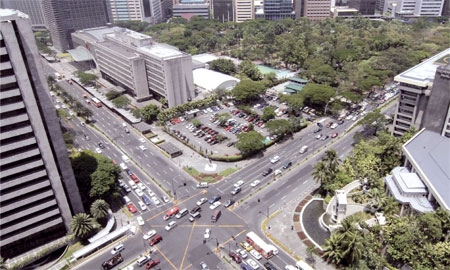A surge in the inflow of foreign direct investment (FDI) into the Philippines this year is being forecast by Bangko Sentral ng Pilipinas. The central bank expects $2.2 billion worth of FDI to be registered by the end of 2011 – a staggering 83.3% rise on the end-of-year total for 2010.
The reason for optimism is the implementation this year of the government’s private-public partnership (PPP) program; the five initial PPP projects put up for bidding this year are valued at $1.1 billion. Investments are also expected to come from major Japanese electronics and semiconductor companies looking to relocate to the Philippines.
A further rise in FDI is predicted for 2012, when the central bank expects a total of $2.7 billion to be registered, basing its prediction, it says, on its revised assumptions and outlook for emerging balance of payments components.
FDI inflows into the Philippines have been declining for a decade, but the trend was exacerbated last year, when other Southeast Asian economies, such as Malaysia, Indonesia and Singapore, enjoyed as much as a five-fold increase. This has been blamed largely on the political uncertainty surrounding the national elections in May 2010, although the government is fully aware there are other underlying factors that it has to deal with to make the business environment more attractive.
Cesar Purisima, Secretary of Finance, says the Philippines must develop its infrastructure, make its policies more competitive and reduce corruption. On the fiscal side, the focus is on being more prudent in the management of resources. “We hope to reduce our deficit to 2% of our GDP by 2013 and maintain that during the rest of the President’s term,” he says.
“President Aquino is trying to accomplish all of this in his six-year term. He does not think he will be able to accomplish it all, and nobody expects him to, but he wants to put the Philippines in the right direction and change things so that the next administration will have no other choice but to continue with the reforms that he started.”
Florencio Abad, Secretary of Budget and Management, says the premium placed on integrity by President Aquino is crucial. “The perception that this is a clean government that will promote transparency and accountability is very important.”
He says the government is determined to make the Philippines competitive in the international marketplace. “This is why we say the Philippines is open for business. We are gearing ourselves up, so the Philippines becomes a truly attractive business destination.”
A big plus is that the Philippine financial system emerged from the 2008 global financial crisis in good shape and has been building on its current position of strength. The central bank recently noted that the continued broad-based growth in bank lending speaks well of the solid growth prospects for the economy; loans for production activities comprise more than four-fifths of commercial banks’ total loan portfolio.
Cesar Virtusio, executive director of the Bankers Association of the Philippines, says that in the last five years (except in 2008), bank lending has grown more quickly, and at a rate that is even better than the GDP growth. On top of that, the percentage of non-performing loans continues to drop – to less than 3%. He believes the banks are well capitalized, with ample provisioning to absorb external shocks. “One of the reasons why the banking sector is so successful is its competent management and supportive regulators,” he explains.
Mr. Virtusio says the Philippines needs to address the obstacles to its growth. “We hope that we can realize the potential that has been linked to the country for a long time now. Now that we have an honest national leadership backed by able and competent cabinet and heads of government agencies, we should have a fair chance to accomplish this.”

0 COMMENTS